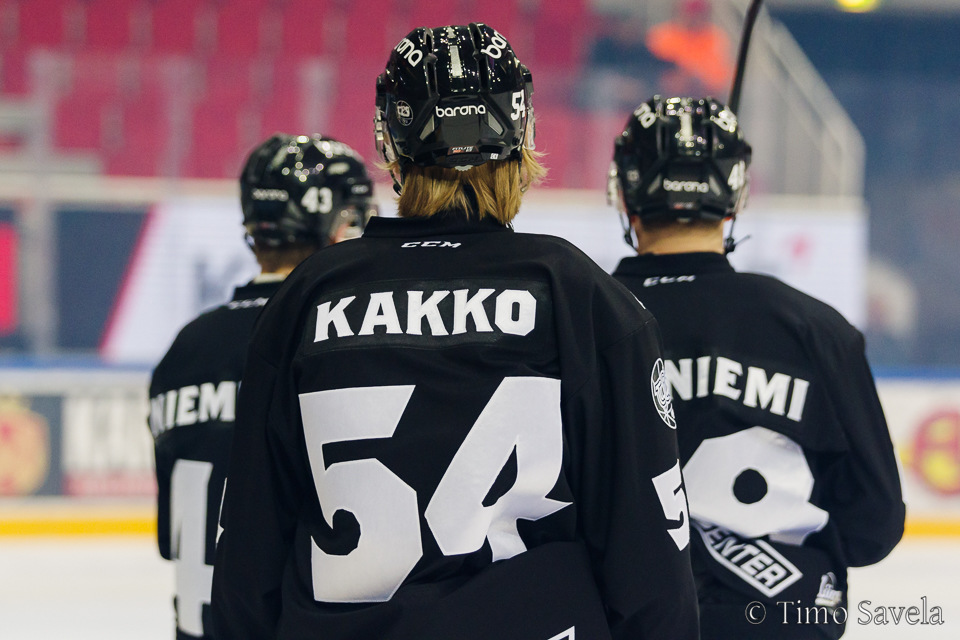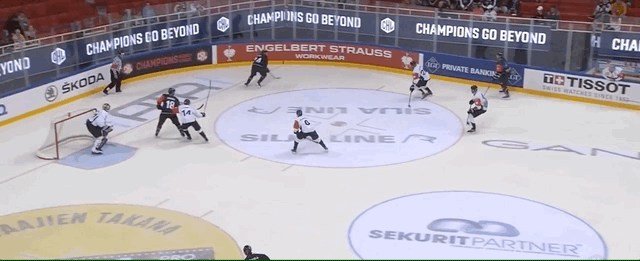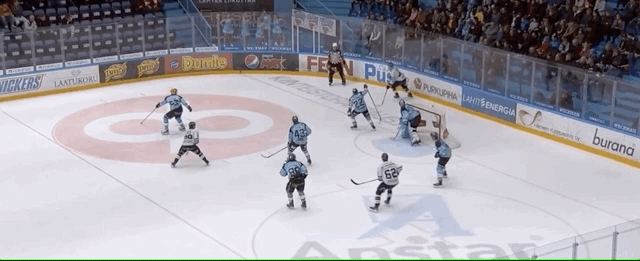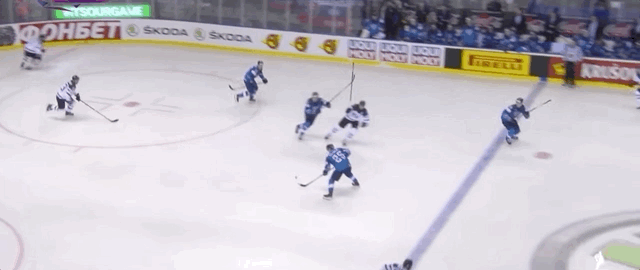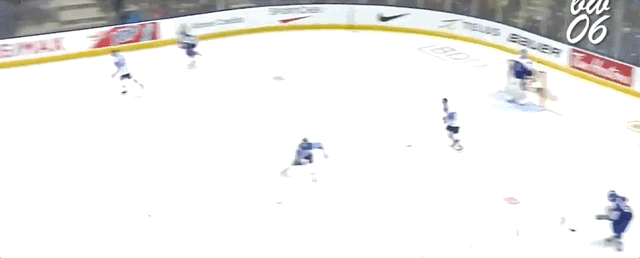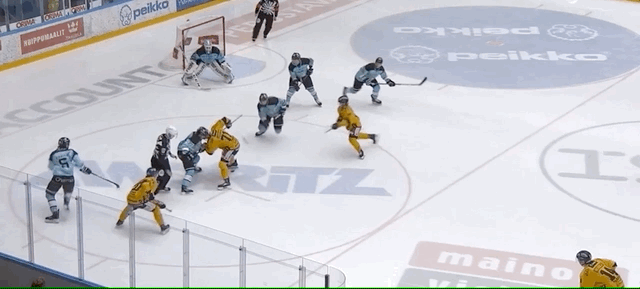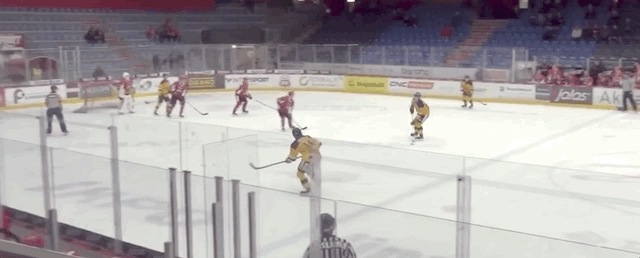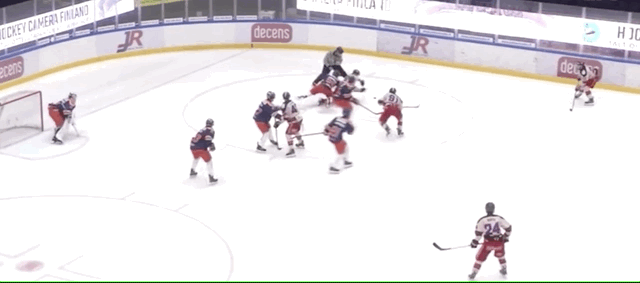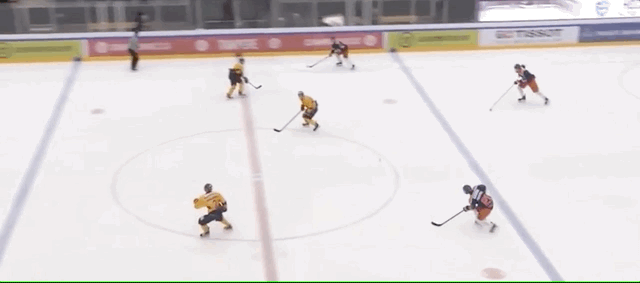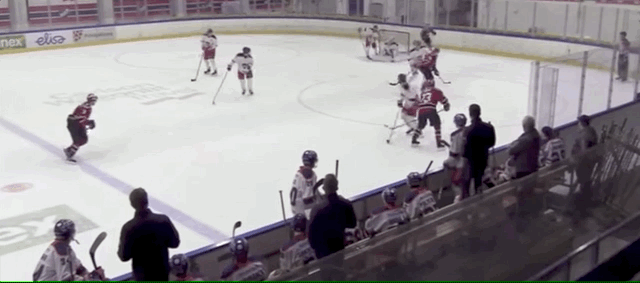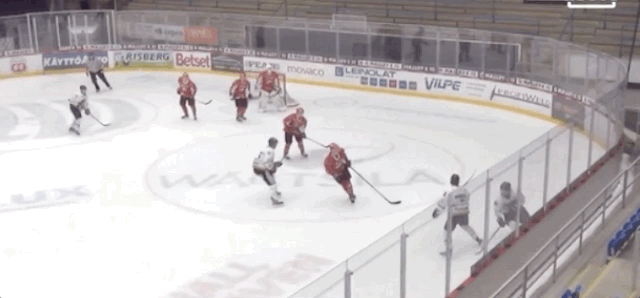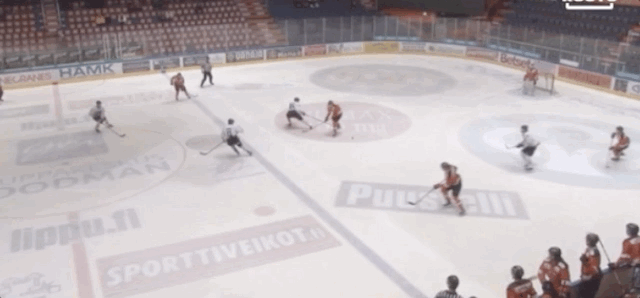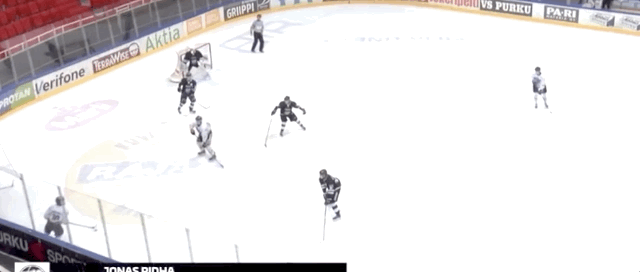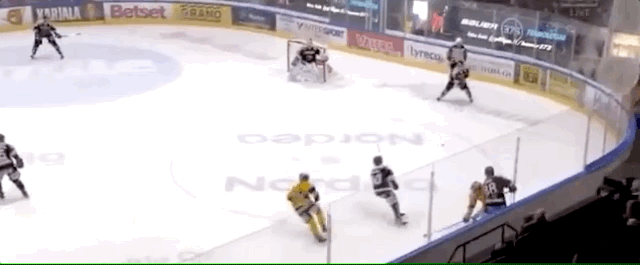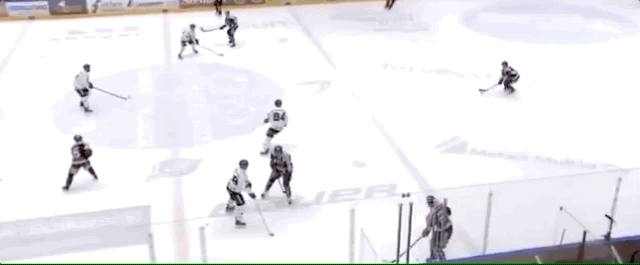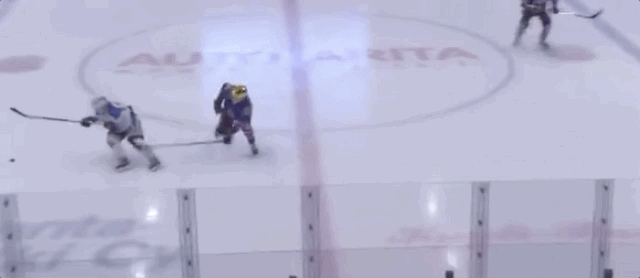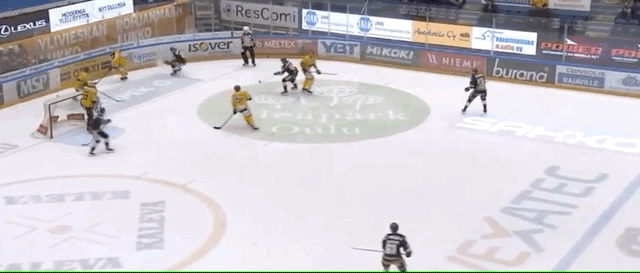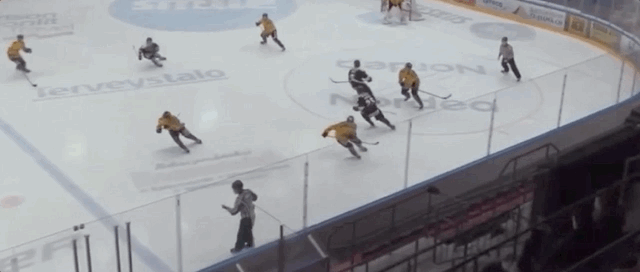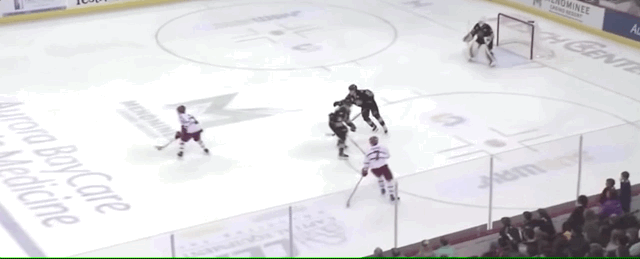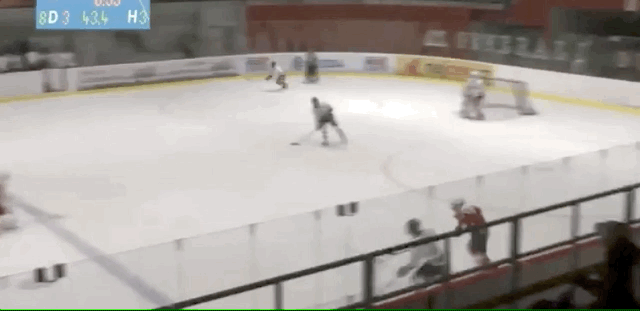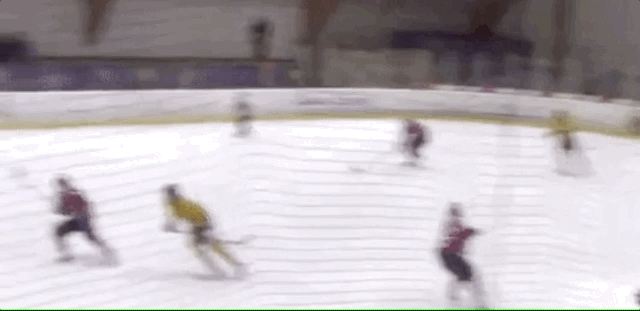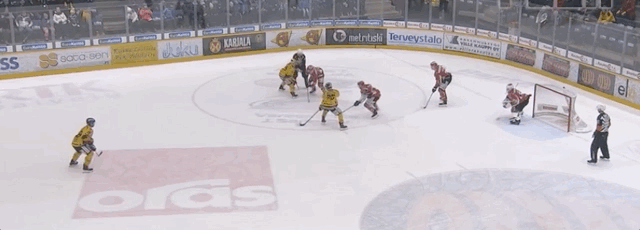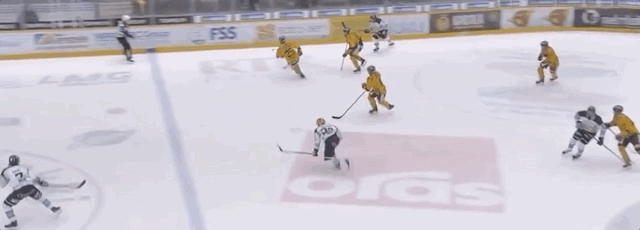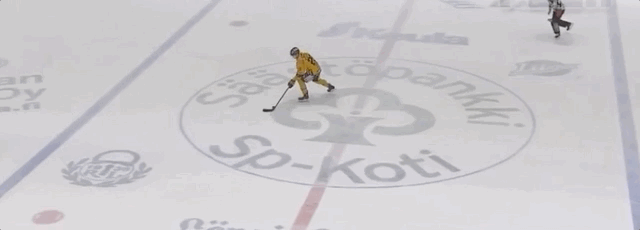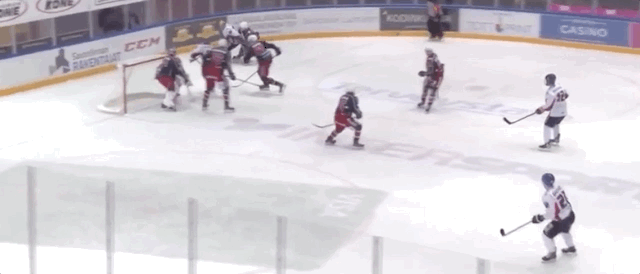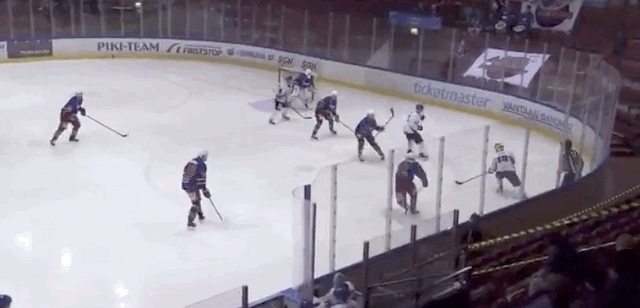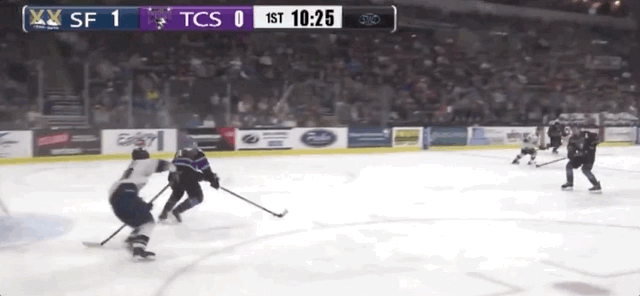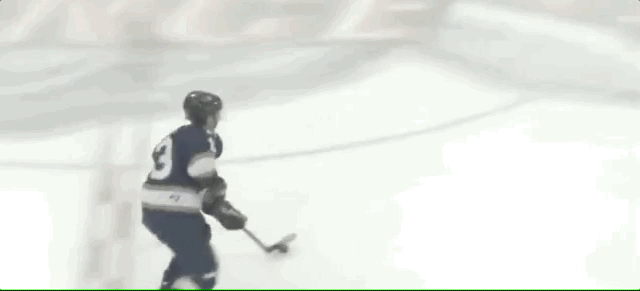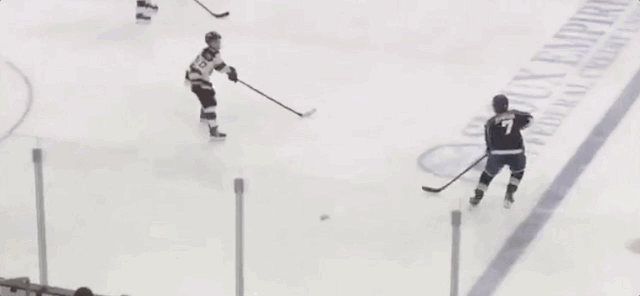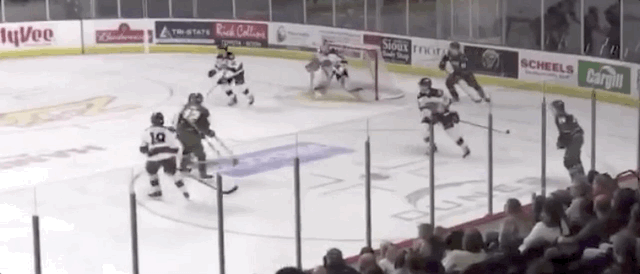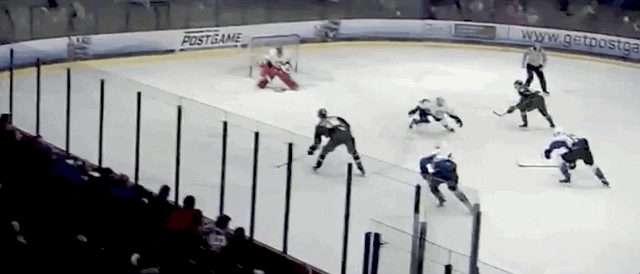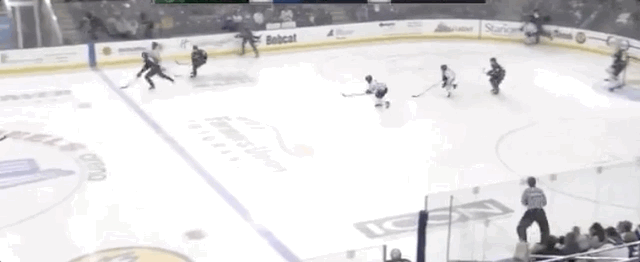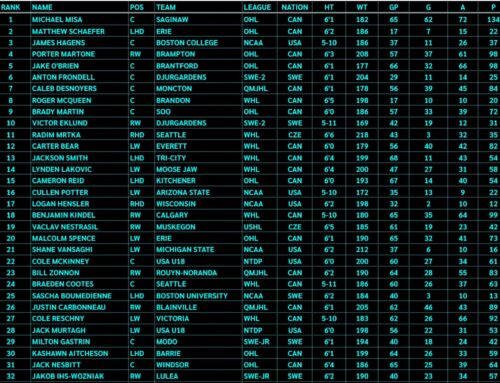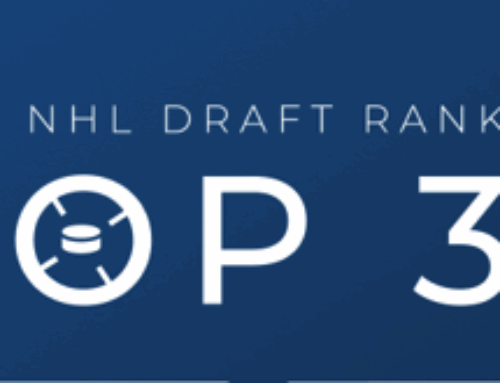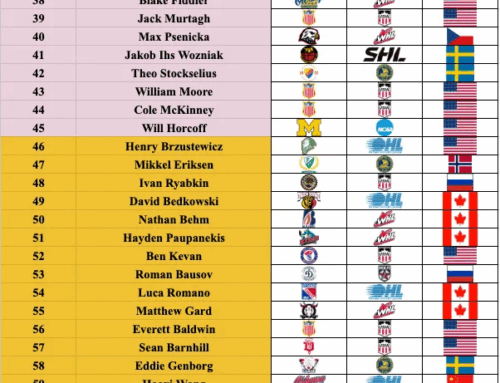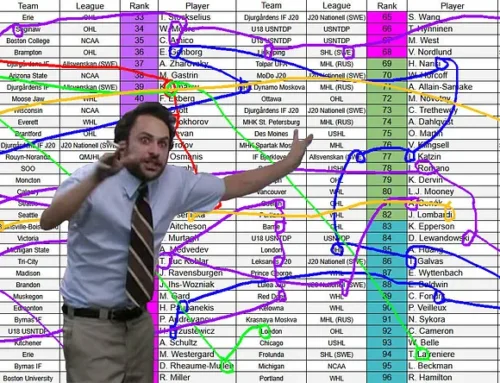Long Read: Sweet 16 – The Top 16 Finnish Prospects for the 2019 NHL Draft
Lassi Alanen
2019-06-10
I base these rankings on many live viewings and comprehensive video scouting. I’ve seen every player who played in Finland this season live (except for the top-ranked player), a big chunk of them many times.
I value hockey IQ, skill and skating the most, in that order. The reasoning behind being that hockey sense is generally the hardest to improve and while skating flaws aren’t easy to fix, I think skill is even harder to teach for the most part. Since there are quite significant gaps between some of the players, especially at the top, positional differences don’t matter much but I tend to prefer forwards to defencemen since they are easier to project. The abilities mentioned above are the most important for both positions. I like players with high upside and at least some tools that are particularly noteworthy. Most importantly, it is my personal rankings and not reflective of what I think will happen in the actual draft.
This crop of Finns is very good. We will very likely see 20+ Finnish players going in the draft and 25 is not an impossible number to reach either. While there aren’t as many 1st round caliber talents than in 2017, we have, in my opinion, the best Finnish prospect since 2013 and lots of quality players for rounds 2–4.
It might take some time to load the whole article, but I hope that the clips included are worth it.
- Kaapo Kakko – LW – TPS (Liiga) – Feb 13, 2001 – 6-foot-2 – 190 pounds
The top player on my rankings hasn’t changed from the time I put my first 2019 list together last May. It has never been even close. Kakko had an excellent campaign in 2017–2018, putting up 55 points in 38 games with TPS’ U20 team before looking dominant at the U18 Worlds, forming one of the best lines of the tournament together with Jesperi Kotkaniemi and Niklas Nordgren. This season, Kakko broke the Liiga record for most goals in a season by a U18 player, a mark previously held by Aleksander Barkov. His 33 points in 45 games are third-most by a U18 player in Liiga history. At the U20 Worlds, he scored the golden goal against the USA in the finals and was excellent for the whole tournament.
Kakko reminds me of last year’s second overall selection Andrei Svechnikov in that they both are very well-rounded prospects. It is hard to find a clear weakness in Kakko’s game because even his lesser hyped qualities are still easily above-average.
To me, Kakko’s most notable qualities are his instincts and puck skills. Despite scoring more goals than he had assists this season, he was excellent at setting up his teammates for scoring chances.
This clip below is ridiculous for so many reasons. First of all, the pass reception is just amazing, as he receives the puck from mid-air while holding his stick with only one hand. Then beats the opposing defenceman in 1 on 1 situation by using his lightning-fast hands and skating technique. Even though the play doesn’t result in anything other than controlled zone entry, it is a solid demonstration of Kakko’s skill level. He pulled off these kinds of plays all season long, playing against professionals in the top men’s league.
If there is one weakness in Kakko’s game, it is his skating. His speed is not particularly great, especially compared to an elite speedster like Jack Hughes. The main question is how much it will impact him at the NHL level. Aside from straight-line speed, Kakko’s skating is actually pretty good. His lateral movement, first few steps, and edge work all get a good grade. He is nearly unstoppable when he has the puck in corners due to his elusiveness and puck protection. He will be a monster at cycling the puck down low.
In the clip below, Kakko shows pretty quick acceleration after receiving a pass (again with one hand. Kakko’s pass receiving skills are just nuts), protects the puck well and shows amazing balance, gliding on a single leg, controlling the puck and deking the goalie and using his reach to finish. The whole sequence is another masterpiece. And the defenceman he beats in the clip? Brandon Montour, a top-four defenceman in the NHL.
To me, Kakko is the best Finnish prospect I have watched since starting to evaluate players more seriously in 2016, and many people share this notion claiming that he is the best talent Finland has produced since Barkov. He has a wide array of tools and very few flaws. He has proven himself playing against men both at the Liiga level and in international competition. Kakko is the safest pick in the entire draft and his radical improvement over the past two seasons makes me believe that ceiling is also very high.
Hughes started the season as the clear-cut top prospect, but Kakko’s improvement and impressive performances at every level have closed the gap entirely for me. Honestly, for me, it is a coin flip between these two at the moment and you can make a very strong argument for Kakko as the best prospect in the entire draft. While Hughes has speed and skating prowess Kakko does not, the 6-2 winger has dominated against men (recently at the men’s world championships) with both his skill and his physicality, which is something Hughes has not yet done. No matter which one the New Jersey Devils end up selecting in June, they’ll be getting a potential superstar talent to their roster.
- Ville Heinola – D – Lukko (Liiga) – Mar 02, 2001 – 5-foot-11 – 181 pounds
Unlike Kakko, Heinola was not considered a top prospect in his position until this season. Sure, he had looked very good at the U20 level as a 16-year-old, but players like Anttoni Honka, Lassi Thomson, and Mikko Kokkonen were ahead of him in every pre-season ranking. FinnProspects had Heinola ranked at #10 in August, but by January, he had jumped all the way to third. Heinola started the season with Lukko’s U20 team and after looking dominant, he quickly got promoted to the Liiga team. He recorded three goals and 18 points in 41 games with regular season and playoffs combined and played in five games at the U20 Worlds before a knee injury which kept him sidelined for a month.
I wouldn’t describe Heinola as a dynamic or a skilled offensive defenceman. He has some offensive upside, but I think that label fits Honka more. He is not a shutdown defenceman, either. I would say Kokkonen is defensively better compared to Heinola. The thing that makes Heinola so intriguing is his multi-dimensional, versatile toolkit. He is pretty good at everything, although he might not be great at any single aspect.
The notion that Heinola is not dynamic offensively doesn’t mean he can’t make plays like in the clip below. He reads and intercepts a pass at neutral zone (something I’ve seen him do regularly) and quickly translates from defense to offense, creating a zone entry in the process. He looks for a pass, but doesn’t find it and instead accelerates to beat the defender. When the second defender (wearing #6) makes a mistake by failing to cover for his man, Heinola identifies this quickly and the pass results in a goal.
When he got called up to play for Lukko’s Liiga team, Heinola had some problems early with picking his spots to do things like these, but by the end of the season, he didn’t many mistakes in transitions or in the offensive zone. At the U18 Worlds, he was easily Finland’s best blueliner (as most other defenders on that team struggled a lot) and a big reason for that was his improved decision-making.
Heinola’s speed and first few steps are not on the level of some of the other defenders expected to go in the same range, but his footwork can be pretty impressive at times. He is good at evading pressure and his movement can be very deceptive. His puck skills are overall good and they are well synced with his feet, a factor which makes him solid at quarterbacking a power play.
In the offensive zone and on the power play, Heinola is more of a passer than a shooter (his wrist shot has improved and is pretty accurate, even though the wind-up is pretty long). I haven’t seen high-end vision, but he creates space for himself well, which ends up regularly opening good passing lanes to use. I have also been impressed with his usage of the backhand pass while exiting the zone. It is not given that a defender trusts his skill and successfully uses the backhand pass that often.
In the defensive zone, Heinola is good at the basics. He closes and controls the gap, positions himself well and ties up the opposing forwards. With the puck, he mixes slow, more patient exits with quicker plays, but defensively he sometimes has problems with the pace. Turns out I’m not alone with this notion, as Mitch Brown also identified the slow-paced defending as a problem in his great article.
Overall, I think Heinola’s well-versed style and skill set makes him a very potential top 4 defenceman in the NHL with a second PP upside. He is not elite or even high-end in any single aspect, but projects as a modern puck-moving blueliner. I would not be shocked if his name was called before the 20th pick.
- Patrik Puistola – LW – LeKi (Mestis) – Jan 11, 2001 – 6-foot-0 – 174 pounds
Puistola’s season has been nothing sort of spectacular. After dominating the U20 circuit for a while, he played a handful of games on Tappara’s Liiga team but didn’t receive proper minutes or role (averaging south of eight minutes in 16 games). It was in Mestis (second men’s tier below Liiga) where Puistola made his most impressive mark, breaking U18 records by scoring 15 goals and 26 points in only 22 games with LeKi. He was among the best Finnish players at the U18 Worlds, too, putting up team-high five goals in five games.
What makes Puistola so intriguing as a prospect is his skill. His hands are among the best in the entire draft class, and these three clips below are all great demonstrations of that.
Puistola is comparable to a player like Hughes in that they both attempt a lot of different moves and dekes. Some of them inevitable fail, but the fact that a significant percentage of them work makes that style work in the long run. Toe drags, between-the-legs dekes and quick forehand to backhand moves are all prominent features in Puistola’s game, which makes him both dangerous and extremely fun to watch.
Here are three more clips of Puistola creating scoring chances by stickhandling the opposing players. These three instances are all from the same game, and to save some time, I left a couple of other sequences out.
While he often got away attempting difficult stuff regularly at the U20 level, Puistola refined his style to succeed in Mestis. He still pulled off nice moves here and there but was forced to play a lot more without the puck and find openings using his hockey sense. Puistola has clearly a nose for the net and often recognizes opportunities faster than his peers.
Here is a clip where he reads the situation perfectly, separates himself and gets a breakaway opportunity (which he buries with a beautiful backhand five-hole move). While sometimes this can seem cheating on defensive responsibilities, Puistola is quick at finding other openings as well.
He also happens to have a very good, accurate release and a solid one-timer. His shot combined with his instincts were the main reason he was able to shatter Mestis record, scoring at a staggering 0,6 goals-per-game rate (playoffs included). Puistola’s playmaking is underrated, as he also creates a lot for his linemates.
The main thing preventing Puistola for being a bonafide top 20 pick is his skating. His stride could use some work, and his top speed and acceleration are both above-average, but not strengths. I’m confident that Puistola’s defensive game will develop due to his otherwise great instincts (that is not to say that he is bad defensively, his other skills are just more developed. He killed penalties regularly with every team this season).
I see Puistola as a first round talent and have him somewhere around 25-30 range. Based on other lists, he could fall to the second round, where he would be a great value pick considering that the upside is high (although he could rise in consensus rankings due to strong U18 Worlds).
- Lassi Thomson – D – Kelowna Rockets (WHL) – Sep 24, 2000 – 6-foot-0 – 186 pounds
After a good U17 season with Ilves’ U20 team, Thomson made the decision to move to North-America for his draft-eligible season. He played for a pretty weak Kelowna Rockets squad but put up great numbers scoring 17 goals (second-most out of any U19 defenceman in the WHL) and 41 points (second-most out of any draft-eligible defenceman in the WHL) in 63 regular season games. I was very surprised to see him get cut from the World Juniors team and still to this date think he would have been more effective than some of the players on that team.
Thomson’s biggest strengths are on the offensive side of things. He has worked on his skating a lot for the past few years and you could argue it’s actually his biggest asset right now. He has powerful stride and very good top speed, and his acceleration has also improved a lot. Thomson’s skating is the biggest single factor that allowed him to make plays like this last season.
Thomson’s second big strength is his powerful shot. It was no accident that a big portion of his points last season were goals, as this is a trend that has been going on for a few years (in 2017-2018, 12 out of Thomson’s 27 points were goals and in 2016-2017, the equivalent numbers were 9 and 20). His wrist shot and slap shot have both a lot of power behind them and his one-timer on the power play proved to be very effective. He is easily the most dangerous shooter out of the blueliners on this list. In the clip below, you can see Thomson utilize both his skating and his shot for a great goal.
Thomson still has some work to do in the defensive zone. He likes to play physically, but that can lead to him getting out of position. Sometimes he can also forget his assignments. Those are issues that can be fixed, so I’m confident that Thomson will become a better two-way player in the near future (he is already decent and ahead of players like Anttoni Honka). Thomson can also be a bit one-dimensional and he hasn’t shown the same levels of playmaking prowess as Honka has for example. He is also one of the oldest players in the entire draft among the top prospects.
Thomson recently signed a two-year deal with his youth team Ilves, so he should be getting a pretty big role in Liiga next season. He will most likely slide to second round, but we could also see him go in the late first if a team is particularly interested in him (this draft is not as stacked with defenders as last year’s, which could lead to some surprising selections in the late first round if a team is in need of one).
- Tuukka Tieksola – RW – Kärpät U20 (Jr. A SM-Liiga) – Jun 22, 2001 – 5-foot-10 – 157 pounds
The biggest riser on my draft board this year, Tieksola started the season as a pretty unknown quantity. I had heard good things about his play in the U18 during 2017–2018 season but wasn’t able to catch him play. He started hot right away with Kärpät’s U20 team and only got better as the season progressed. By the end of the season, he had made his Liiga debut (he could have played in Liiga for the majority of the season, but Kärpät happens to be the most stacked team in the nation), recorded most assists in the entire Jr. A and been named the rookie of the year. Kärpät also won the U20 championship in rather dominant fashion.
Tieksola is a fantastic playmaker with great hands. He can dangle through multiple players and make a picture-perfect pass right after. He was able to take over shifts and games with his individual play, often creating tons of chances for his linemates. Tieksola profited from playing on a stacked line together with Devils 7th-rounder Eetu Päkkilä, but as a natural shooter, Päkkilä also benefited massively from playing in a line with Tieksola.
As you can see from the clip above, Tieksola’s patience with the puck is notable. He has the vision and the confidence to wait for players to get in the right positions before passing. He does a lot of stuff with the puck but isn’t the same type of high-volume dangler like Puistola. Instead, Tieksola picks his spots well and isn’t afraid to make simpler plays when needed. I’ve been in awe with his ability to do so much without making many mistakes in the process. I tracked Kärpät for a few games, and unsurprisingly Tieksola came out as one of the best forwards in pretty much every category (zone entries, shot assists, etc.).
Tieksola is a capable skater with a good stride, but I wouldn’t call him particularly quick. He is fairly early in his physical development (5-foot-10 and 157 pounds), and with added muscle mass he could add more power to his skating. Tieksola has also a quick and effective wrist shot, which makes him a dual-threat from the left-side half wall on the power play.
Tieksola is already very good right now, but all the signs point to him having a lot of untapped potential. He has developed a lot during this season skill-wise and is far from being in his physical peak. Tieksola also happens to be relatively young for this draft, being born in late June. He recently signed a contract extension with Kärpät and should be a good candidate to make their Liiga team next season. Tieksola is a player who could go a lot later than he should because of limited exposure and hype. In my books, he is a second round talent.
- Anttoni Honka – D – KeuPa HT (Mestis) – Oct 05, 2000 – 5-foot-10 – 176 pounds
Honka started the season as the best Finnish defensive prospect and a potential top 15 pick. As a 17-year-old, he had looked dominant at the U20 level and made his mark with JYP’s Liiga team, putting up nine points in 20 games. Honka also played a pivotal role in Finland’s victory at the U18 Worlds, recording five assists in seven games.
Unfortunately, Honka wasn’t able to live up to the expectations this season (especially for the first half). He started with JYP’s Liiga team, but his ice time quickly plummeted and in November, he got loaned to Mestis squad KeuPa HT, where he played for a month before the World Juniors. Honka’s role was very limited at that tournament and the coaches didn’t seem to trust him that much. After World Juniors, Honka played a handful of games with JYP’s U20 team before getting loaned to Liiga team Jukurit, where he began to get top-four minutes and look like his old self. Jukurit didn’t qualify for the playoffs and Honka was sent back to KeuPa HT for the Mestis playoffs, where he played his best hockey of the season, recording 11 points in 17 games.
Honka is undoubtedly one of the most offensively-gifted defenders in the entire draft class and arguably has more upside than players like Heinola and Thomson. He is amazingly mobility and keeps his feet moving all the time, which makes him excellent at dodging forecheckers and making plays from the backend. Honka’s hands are also very good for a defenceman, which helps him a lot at exiting the zone and in transitions. While players like Heinola rely more on passes to create zone exits, Honka has the ability to make a simple passing play, but he can also go coast-to-coast with the puck. On the power play, Honka is a pass-first type of a quarterback, but he also has a snappy and decently accurate wrist shot in his back pocket to mix things up.
It’s in the defensive zone where Honka struggles the most. He is 5-foot-10 and not very physical and has problems with keeping up with the players he is supposed to track. He is decent defending against rushes due to his skating, but he can also be too aggressive from time to time, which causes turnovers and 2 on 1 situations. He also made too many mistakes like to one below (the play occurred in the overtime of a Mestis final).
Honka has also an older birthdate, which complicates the matters even more. He didn’t really take noticeable steps forward this season compared to a player like Heinola, who made massive improvements over the course of last year. Many people have compared Honka to Merkley due to their “boom or bust” status and offensive skills, and while I liked Merkley more in his draft season, the comparison is not totally misguided.
I wouldn’t be surprised if Honka fell to the second round where he would be a good value pick, but I also could see him getting picked in the late first round (or even earlier if a team has two first round picks for example). Next season will be very telling for Honka, as he needs to take bigger steps forward and find a regular role in Liiga. I’ve seen him play probably 25+ times over the past two years (and over half of them are live viewings), and I’m confident that if he fixes the defensive and consistency issues, the upside with him is big.
- Mikko Kokkonen – D – Jukurit (Liiga) – Jan 18, 2001 – 5-foot-11 – 198 pounds
Kokkonen has been one of the most mature players in his age group for a long time, and always played against older competition. He already made his Liiga debut during the 2016–2017 season, played 12 games last season and this year, he was a regular on Jukurit’s defence, often playing 20 minutes a night as a 17-year-old. Despite that, he was cut from the U20 Worlds roster together with Thomson, which was very surprising at the time, as players who weren’t even full-time players in Liiga were selected ahead of them.
Despite putting up great numbers as a draft-eligible defenceman in Liiga (19 points in 56 games), Kokkonen is more of a defensively-oriented player who can move the puck in transitions and also play on the power play, which he did regularly during the course of the season. His hockey sense is pretty high, especially defensively. It often looked like this was his fourth pro season rather than his first.
That being said, I have questioned Kokkonen’s transitional play and offensive input for a while now. His skating is rather average. He lacks explosiveness and doesn’t have the same kind of mobility and lateral movement that Heinola and Honka have. Kokkonen’s puck skills are also pretty bland. Surprisingly often he found himself panicking with the puck in his own zone and ended up giving it away or dumping it out.
I can cut him some slack for this in Liiga. After all, he played for one of the worst teams in the league and didn’t have much support or amazingly capable forwards. But this trend has been present at the international level, too. I have wished that he would show more offence playing against players his age, but that hasn’t happened yet. At the U18 Worlds this spring, he was Finland’s least effective defenceman at creating controlled exits according to my tracked data.
Simple decisions can be effective most of the time, but it also leaves the question whether chooses to do things because it is the correct play or because he doesn’t have the skills to do anything else. Kokkonen has already maxed out his frame, and his improvement has been minor. His floor as a player might be pretty high, but his ceiling might not be. That’s why a player like Honka is ranked ahead of him on this list. Kokkonen’s chances to reach the NHL might be significantly higher, but Honka has more potential.
- Leevi Aaltonen – LW – KalPa U20 (Jr. A SM-Liiga) – Jan 24, 2001 – 5-foot-9 – 168 pounds
Aaltonen has been a highly touted player in his age group for a while now. He put up massive numbers in Jr. C as a 14-year-old and won the U20 championship with KalPa last season. He started the season with KalPa’s Liiga squad, but got sent back to the U20 team after seven games. Aaltonen also played a single game of Mestis with IPK and was featured in a top 6 role at the U18 Worlds.
Tiny winger at 5-foot-9, Aaltonen main strength is his skating. He is the fastest Finnish skater eligible and among the best in the entire draft class. His acceleration, top speed, and edgework are all high-end. His elusiveness combined with high compete level make him valuable at even-strength and on the penalty kill.
On the power play, Aaltonen likes to position himself on the left-side half wall and shoot the puck a lot himself. His wrist shot is a combination of good accuracy and velocity, and he can get his shot off fast and doesn’t need a lot of space to do so. I saw him beat many goalies clean with wristers from behind the circles this season. Aaltonen was also the most frequent Finnish shooter by a considerable margin at even-strength at the U18 Worlds according to my data. Most of his shots were from low-danger areas, though.
Aaltonen has profiled himself as a shooter at the international level, but his playmaking is also pretty good. His passes are crisp and precise, and he has shown a fair bit of creativity over the past two seasons I’ve been watching him. He is a good stickhandler at high speeds, but I don’t see a dynamic skill level. Aaltonen’s development has also stalled a bit for the past year.
Despite his height, I see Aaltonen as a player who could be useful third- or fourth-line winger in the NHL eventually even if he doesn’t hit his ultimate ceiling. It’s not hard to imagine him as a great penalty killer because of his speed and work ethic on the ice. Therefore, I see him as a relatively safe pick in the third round range.
- Matias Maccelli – LW – Dubuque Fighting Saints (USHL) – Oct 14, 2000 – 5-foot-11 – 170 pounds
Maccelli was the most difficult player among the Finns to evaluate for me this year. It wasn’t hard to see the things he is good at and the areas he needs to improve a lot, but I just couldn’t get a read on how good he actually is.
The most impressive thing about Maccelli’s season: his production. 72 points in 62 USHL games on a pretty average team is a fantastic mark. Maccelli finished third in USHL scoring and tied Erik Haula’s record for most points in a season by a Finnish player (and Haula set his record in his draft +1 year). He put up more points per game than Eeli Tolvanen did in his draft-eligible season (although Maccelli has a late birthdate) while the next highest scorer on Dubuque had 22 points fewer than him.
Maccelli is no-doubt a skilled player. His individual puck skills are very good and he isn’t afraid to use them, even when it ends up costing his team sometimes. Maccelli is an excellent shooter, one of the best among the Finnish forwards eligible in the draft. Much like Aaltonen (I think Maccelli is the better shooter), he can beat goalies from long distances with accurate wrist shots, which is a big reason why he was Dubuque’s go-to shooting option on the power play.
Maccelli sees the offensive side of things at a high level. His vision is good, and he often holds on to the puck and has the patience to wait before passing at a right time. He anticipates how things progress and this resulted in him getting a ton of breakaways this season.
There is a ton of question marks, though. I’ve questioned Maccelli’s compete level a lot, as he has been notoriously lazy in his own end previously. He got better in that regard this season, but he still has a lot of work to do in that regard. Maccelli is above-average skater for his size but lacks extra gear. More worrisomely he lacks pace in his game, often holding on to the puck for too long and not making plays quickly enough.
Maccelli recently signed with Ilves and will opt to play in Liiga instead of going to NCAA, which means we will see next season how he adapts to the pro game. I like his puck skill, playmaking, and shot, but there has been a disconnect between my eye-test and his numbers all season long. It’s likely that I have missed something, but I have put many hours in watching his tape this season. Maccelli is a definition of a high-risk, high-reward.
- Henri Nikkanen – C – Jukurit U20 (Jr. A SM-Liiga) – Apr 28, 2001 – 6-foot-2 – 185 pounds
Nikkanen came into the season as the second-best Finnish draft-eligible forward after Kakko (we at FinnProspects had him ranked #3 overall). He had put up great numbers in the Jr. A in 2017–2018 and was the top center and captain for the U16 and U17 national teams.
He decided to sign a two-year deal with his youth team Jukurit (Kokkonen, Aaltonen, and Nikkanen all started their hockey career with Jukurit. Pretty rare to get three top talents in a same age group from a city as small as Mikkeli) and started the season well playing limited minutes with the Liiga team and in a bigger role with the U20 team. After the first two months, Nikkanen’s season took a downward trajectory, as he suffered from a lower-body injury for most of the season. He didn’t play any games until the U18 Worlds pre-tournament camp and wasn’t able to make the team.
Despite his injury-filled season, Nikkanen continues to be an intriguing prospect due to his skillset. First of all, he is a 6-foot-2 center. He skates very well and has good explosiveness and top speed. Nikkanen’s puck skills are also noticeable, as he is able to stickhandle in tight spaces and capable of surprising defenders with odd moves. Nikkanen is also a fine playmaker who can make standout passes from time to time.
I’ve been a bit worried about Nikkanen’s decision-making from time to time. He can surprise with high-end passes like the two above, but he can also be very invisible for big stretches at a time. He can often create a zone entry due to his feet and hands, but too often those zone entries don’t lead to anything significant. Nikkanen also could use his size more to his advantage, although he is already a fairly decent two-way player and has been used on the penalty kill.
I still remain somewhat optimistic about him due to his frame, skating, and decent skill, but this season put a pretty big asterisk next to his name. His production at the U20 level was not that great, although it’s hard to know if he was 100% at any point during the season. Despite that, Nikkanen could be worth a gamble in the third round, but I would be hesitant to take him before that (I would think there is a decent chance he goes before that due to him being a big center).
- Antti Tuomisto – D – Ässät U20 (Jr. A SM-liiga) – Jan 20, 2001 – 6-foot-3 – 176 pounds
Tuomisto has been another big riser on many boards this season. He started the season as a relatively unknown quantity and got more and more attention as the season progressed. Tuomisto was Ässät’s U20 team’s third-most productive player with nine goals and 35 points in 45 games. He was featured on the second Jr. A all-star team and played a prominent role at the U18 Worlds until he got suspended for the quarterfinal game.
The first thing that catches your eye when watching Tuomisto is his 6-foot-3 frame. He is very lanky (measured at only 176 pounds) and physically relatively undeveloped, but there is a lot of room to grow for him in that department. Tuomisto’s straight-line speed is also pretty good for a defenceman his size. In the clip below, Tuomisto creates both a zone exit and an entry using his feet.
Tuomisto likes to keep his game simple. He has a good amount of poise with the puck, which allows him to wait for the right time to make an opening pass. Tuomisto’s stickhandling skills are very average, as he sometimes looks quite uncomfortable with the puck. This can be something that he improves as he grows into his body, but at this moment that is yet to have happened. Tuomisto was a main-stay on Ässät’s power play, and he has a rocket of a slap shot from the point.
In the defensive zone, Tuomisto likes to use his frame to his advantage. He likes to tie opposing forwards along the boards and his size makes him effective in front of the net. Tuomisto’s reach makes him difficult to beat in corner battles. His defending against rushes could be better, as I saw mediocre U20 players beat him 1 on 1 over the course of the season. I think this is mainly caused by his lack of mobility and lateral skating prowess – another thing that could improve as he matures.
I have heard scouts compare Tuomisto to Esa Lindell, who was also quite lanky and clumsy in his draft-eligible season but became a solid top 4 defenceman in the NHL level with time. I’m not as sold on Tuomisto as many of my fellow Finnish evaluators, as I haven’t seen enough offensive skill to be justified a higher ranking on my list. Still, with time I think he could become an effective NHLer. Tuomisto won’t play in Liiga next season, as he is going to play in NCAA in 2020–2021. This could mean another season in the U20 league or a move to USHL.
- Aku Räty – RW – Kärpät U20 (Jr. A SM-Liiga) – Jul 05, 2001 – 6-foot-0 – 170 pounds
Brother of the highly-touted 2021 eligible Aatu, Aku Räty caught my eye early this season while watching Kärpät’s U20 team live. While the team had a poor game relatively to their standards, Räty stood out to me with his speed, skill and compete. He continuously impressed me over the U20 season and I really liked his performance at the U18 Worlds as well, where he was a major contributor to his line’s relative success as a possession-driving unit.
Räty doesn’t really have a standout tool, but he is good at everything. He is an effortless skater and has quality first few steps and top speed combined with a great motor. Räty is always on the move and is very effective on the forecheck. He has good vision and is able to make plays, although he played a more of a net-front presence role with Kärpät.
Räty doesn’t have high-end skill, but I think his hands are underrated by many. He can occasionally make end-to-end rushes like the one above and his stickhandling in corners and tight spaces is very good. Räty’s smarts are very good. He drives the play by creating exits and entries and makes others around him better. He is one of the better possession-driving players on the list.
While lack of truly high-end abilities might prevent Räty from becoming a true top-six winger at the NHL level, I could easily see him becoming a middle six forward who can make things happen at even-strength and contribute on the penalty kill. He is pretty young for this draft, which helps as well. I might be higher on Räty than most, but I think there is a good reason to be very optimistic about his future.
- Antti Saarela – LW – Lukko (Liiga) – Jun 27, 2001 – 5-foot-11 – 183 pounds
Saarela has been on scouts’ radar for a while now. Brother of Carolina Hurricanes prospect Aleksi Saarela (who was a third-round pick in 2015), Antti had a somewhat rollercoaster of a season. For the first half, he failed to impress me in any of my viewings with Lukko’s U20 team. When he got called up to play for the Liiga team, though, Saarela stepped up his game noticeably and managed to get 10 points in 24 games while playing pretty limited minutes in most games. At the U18 Worlds, I thought he wasn’t as good again.
Saarela’s main calling cards are his good speed and ability to drive the play, even against men. His acceleration and top speed are both very good, and he can also make plays in high-tempo situations. Saarela has always been more of a playmaker, but I didn’t see anything special in that department this season. Same could be said about Saarela’s individual puck skills; they are decent, but nothing out of ordinary. He did become a more dangerous shooter, though.
Saarela competes well and he can drive to the net with power. He has played center at the junior level, but was moved to wing in Liiga, a position I think he is most effective at. He could be a defensive center with his feet, but I’m not quite sure if he has the smarts to play that role.
I think he projects more as a third-line type winger who can skate, drive play and now and then make nice individual plays as well. I have Saarela ranked relatively low compared to other lists. I think his floor is relatively high, but as said before, I don’t see dynamic elements in his game that would warrant a place higher on the list. He does have the time on his side, though, as he is relatively young for the draft. Saarela will play for Ilves next season.
- Kristian Tanus – C – Jukurit (Liiga) – Aug 17, 2000 – 5-foot-8 – 159 pounds
Tanus has established himself as clearly the top Finnish over-ager in this draft. I had him relatively high on my list going back to last year when he was one of the youngest players eligible. He had been good at the U20 league and excellent at the U18 Worlds where he put up seven points in seven games.
Tanus played for a total of four different teams this season. He was featured in a couple of games with Tappara’s Liiga and U20 teams but made his mark with LeKi in Mestis where he put up whopping 44 points in only 33 games and became the highest-scoring U20 player in the league’s entire history. In January, Tanus got loaned to Jukurit’s Liiga team and made a solid splash, recording six points in 17 games.
Tanus’ standout attribute is his vision. He is a high-end playmaker with excellent instincts. Particularly his patience with the puck is noticeable (a trait that unites top passers). Tanus runs the power play extremely well, arguably better than any other Finn in the draft.
Tanus’ hockey sense is not limited to only passing, as his smarts show in all three zones. He is not a defensive specialist, but plays a solid 200-foot game and has been regularly used on the penalty kill in every team has played for. His shot has also improved noticeably from last season.
What kept Tanus from getting drafted last year are his size (5-foot-8) and merely average skating ability. I think his speed has improved, but it is not par with the rest of his skill set. Those things might prevent him from never reaching the NHL, but if you want to gamble on a player who has noticeable upside, Tanus is your guy. He should be a regular in Liiga next season.
- Jami Krannila – C/RW – Sioux Falls Stampede (USHL) – Oct 03, 2000 – 5-foot-10 – 161 pounds
Committed to going to a great program in St. Cloud State University for next season, Krannila had a good year in the USHL, playing for the championship-winning Sioux Falls Stampede. He jumped to USHL from the Finnish U18 league where he was awarded the best forward in 2017–2018. Krannila managed to put up 17 goals and 45 points in 60 games in the regular season but received more limited ice time in the post-season.
On the older side for this year’s draft (October birthdate), Krannila is a small center with very good offensive instincts. He reads the game well, is dangerous off the rush and creates a lot for his teammates. He showed excellent creativity in the offensive zone during the season. Primarily a playmaker, Krannila has also improved his shot a lot from last year.
Krannila’s vision makes him a threat on the power play. This play below is a great example of that. As soon as the opposing defenceman moves his stick from the passing lane, Krannila executes and finds his teammate for a rather easy goal.
Krannila’s skating is not his biggest strength, as his speed is nothing special for a small forward, but he is not particularly slow either. He can be elusive and even beat defenders once in a while. Defensively, Krannila is still a work in progress, and it was probably the main reason he wasn’t used as much in the playoffs. Three or four years in college could go a long way helping him develop physically, which is another area of improvement. As a long-term project, I like Krannila due to his vision and skill.
- Marcus Kallionkieli – LW – Sioux City Musketeers (USHL) – Mar 20, 2001 – 6-foot-1 – 176 pounds
Kallionkieli started his first USHL season with a bang but cooled off considerably over the course of the season. Early in the season, he playing on a stacked line with Calgary Flames prospect Martin Pospisil and 2019 eligible Bobby Brink, which helped his production a lot. When Brink and Pospisil were out with injuries, Kallionkieli struggled to create offence and his production tailed off as well, although he did end the season with impressive 29 goals and 53 points in 58 games.
The 6-foot-1 winger is a talented shooter with a nose for the net. He can beat goalies clean with his heavy wrister and also pick corners from in front of the net. He shoots a lot both at even-strength and on the power play. Kallionkieli has solid skating mechanics for a player his size. He doesn’t have blazing fast first steps, but his top speed is decent.
Kallionkieli has decent puck skills and he can stickhandle in tight areas, but his skills are not dynamic. He is not a great playmaker either, which makes him a bit one-dimensional. He does create a decent amount of zone entries and exits, but he relies on his linemates to make plays and acts more as a finisher. That is not exactly a bad thing but makes me think he is more of a complimentary player rather than someone who drives results. He shines when he has skilled passers like Brink on the same line.
Overall, I don’t think Kallionkieli has enough high-end tools to warrant a pick in the first three rounds despite his impressive production (although he almost certainly will get picked before the fourth round). Even though he could be a player if he adds more skill and an extra gear, at this point, his one great skill (goal-scoring) is not high-end enough to make me want to take him ahead of someone like Tanus or Krannila who both have more dynamic traits.
**
**
Editor’s Note: This piece was originally posted on Lassi’s personal website. Click the link to read about prospects 16-25 as well as some Honourable Mentions
**


